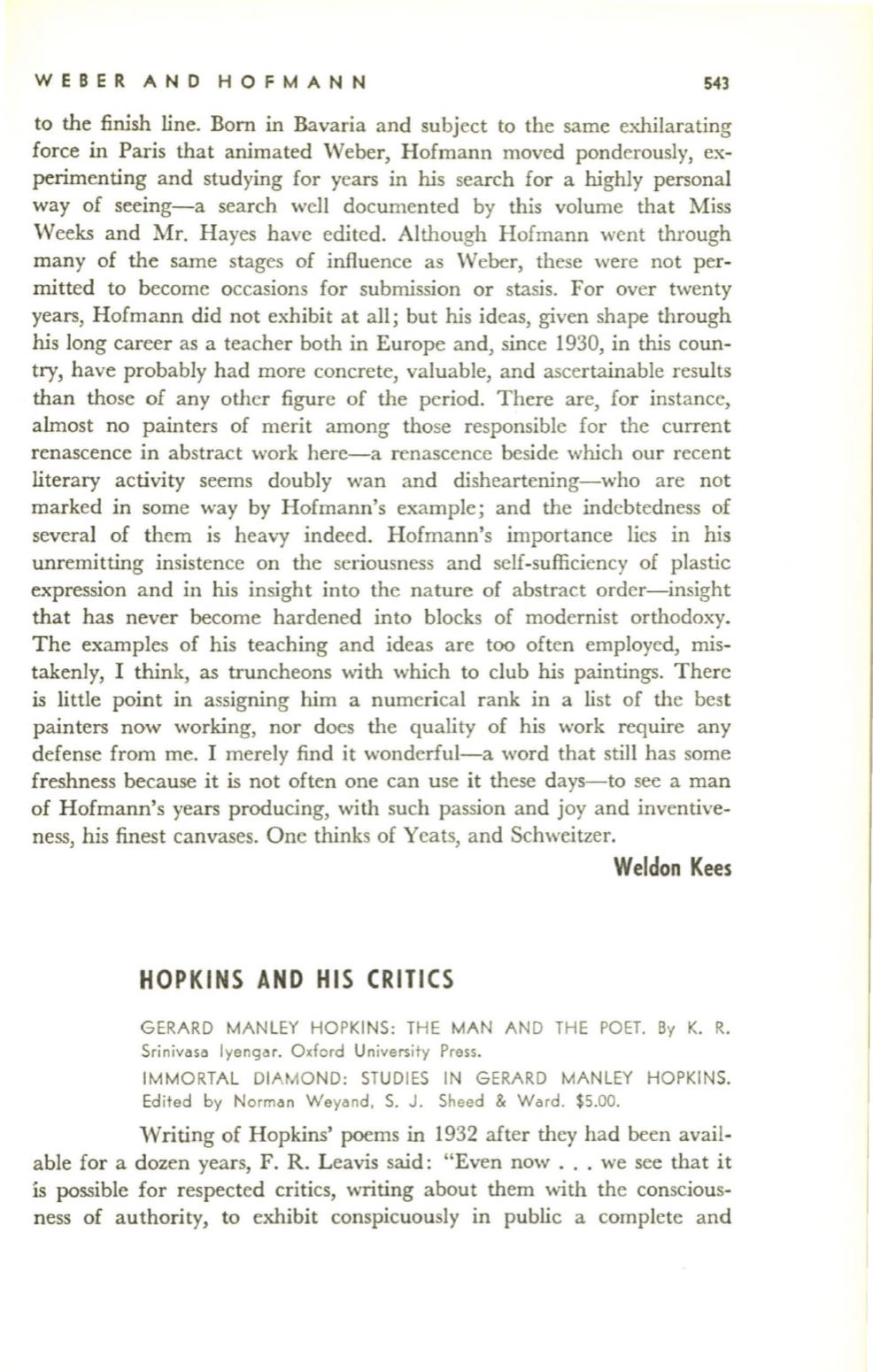
WEBER AND HOFMANN
543
to the finish line. Born in Bavaria and subject to the same exhilarating
force in Paris that animated Weber, Hofmann moved ponderously, ex–
perimenting and studying for years in his search for a highly personal
way of seeing-a search well documented by this volume that Miss
Weeks and Mr. Hayes have edited. Although Hofmann went through
many of the same stages of influence as Weber, these were not per–
mitted to become occasions for submission or stasis. For over twenty
years, Hofmann did not exhibit at all; but his ideas, given shape through
his long career as a teacher both in Europe and, since 1930, in this coun–
try, have probably had more concrete, valuable, and ascertainable results
than those of any other figure of the period. There are, for instance,
almost no painters of merit among those responsible for the current
renascence in abstract work here-a renascence beside which our recent
literary activity seems doubly wan and disheartening-who are not
marked in some way by Hofmann's example; and the indebtedness of
several of them is heavy indeed. Hofmann's importance lies in his
unremitting insistence on the seriousness and self-sufficiency of plastic
expression and in his insight into the nature of abstract order-insight
that has never become hardened into blocks of modernist orthodoxy.
The examples of his teaching and ideas are too often employed, mis–
takenly, I think, as truncheons with which to club his paintings. There
is little point in assigning him a numerical rank in a list of the best
painters now working, nor does the qua lity of his work require any
defense from me. I merely find it wonderful-a word that still has some
freshness because it is not often one can use it these days-to see a man
of Hofmann's years producing, with such passion and joy and inventive–
ness, his finest canvases. One thinks of Yeats, and Schweitzer.
Weldon Kees
HOPKINS AND HIS CRITICS
GERARD MANLEY HOPKINS: THE MAN AND THE POET. By K. R.
Srinivasa Iyengar. Oxford Un iversity Press.
IMMORTAL DIAMOND: STUDIES IN GERARD MANLEY HOPKINS.
Edited by Norman Weyand, S.
J.
Sheed
&
Ward. $5.00.
Writing of Hopkins' poems
in
1932 after they had been avail–
able for a dozen years, F. R. Leavis said: "Even now ... we see that it
is possible for respected critics, writing about them with the conscious–
ness of authority, to exhibit conspicuously in public a complete and


